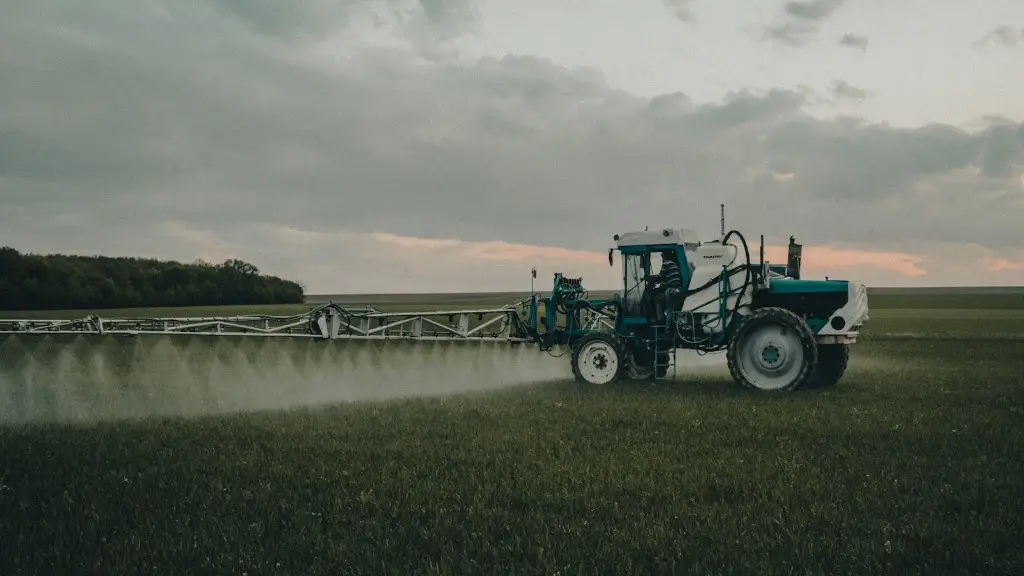With the degradation of the world’s natural resources, it’s important now more than ever to find ways to live sustainably. Regenerative agriculture is a type of farming that not only aims to protect the environment, but also to improve it. This is done by using techniques that mimic the way natural ecosystems function.
There are many ways that you can support regenerative agriculture. One way is to buy products that are certified regenerative by organizations like the Regenerative Organic Alliance. You can also support farmers who are using regenerative practices by buying their products directly from them. Finally, you can spread the word about regenerative agriculture and its benefits to help create more demand for these products.
There are many ways that you can support regenerative agriculture. One way is to buy food that is grown using regenerative practices. You can also support farmers who are using regenerative practices by purchasing their products or by investing in their businesses. You can also advocate for regenerative agriculture by spreading the word about its benefits and by working to create policies that support its growth.
How can we help regenerative agriculture?
Regenerative agriculture is a type of farming that focuses on rebuilding the soil. This is done through practices such as reduced or no-till farming, cover cropping, composting, and increasing crop diversity.
Organic annual cropping, phytoTerra soil microbe food, and managed grazing are also important practices in regenerative agriculture. By following these practices, growers can help to improve the overall health of the soil.
The 5 Principles of Regenerative Farming are:
1. Soil Armor: This principle states that the soil should be covered at all times to protect it from erosion and degradation. This can be done through the use of cover crops, mulch, and other methods.
2. Diversity: This principle calls for a diversity of crops and animals to be present on the farm. This helps to create a more balanced and resilient ecosystem.
3. Continual Live Plant/Root: This principle states that there should always be living plants and roots in the soil. This helps to aerate the soil and keep it healthy.
4. Livestock Integration: This principle calls for the integration of livestock into the farming system. This can help to provide manure for the soil and also help to control pests.
5. Minimizing Soil Disturbance: This principle states that the soil should be disturbed as little as possible. This helps to preserve the soil’s structure and keep it healthy.
What are the 4 practices of regenerative agriculture
Regenerative farming practices are those that help to regenerate and restore the natural resources that are used in agriculture. These practices promote biodiversity and help to improve the soil health, water quality, and overall ecosystem health. Regenerative farming practices include cover crops, crop rotation, no-tillage, the use of organic fertilizers, and regenerative grazing management.
There is no one-size-fits-all solution to transitioning to regenerative agriculture, but there are some general principles that can guide the process. Acknowledging the spectrum of regenerative practices is a good place to start. From there, agree on definitions and don’t get dogmatic about the approach. Follow the data to see what’s working and make adjustments as needed. Finally, keep in mind that this is a long-term process and focus on the end goal of reversing climate change.
Why support regenerative agriculture?
There are numerous benefits to regenerative agriculture beyond carbon sequestration. These include more efficient water use and fewer pests, as greater biodiversity makes the land more resilient. In addition, regenerative farming practices can improve soil health and farmer incomes, while reducing greenhouse gas emissions from agriculture.
There are a few disadvantages to regenerative agriculture. Farmers will need to acquire new knowledge and skills in order to implement these changes. Additionally, less tilling may lead to more unwelcome plants taking over the fields. Some farmers may compensate for this by increasing their use of herbicides.
What are 3 ways that regenerative agriculture better simulates nature?
Regenerative agriculture is a type of agriculture that works to decarbonize the supply chain by reducing deforestation, improving nutrient management, and introducing farming and grazing practices that sequester carbon. This type of agriculture has the potential to help reduce the impact of climate change, and help farmers and ranchers become more resilient to the effects of a changing climate.
1. Reduce Disturbance to the Soil:
Tilling and plowing can cause soil compaction, which in turn can lead to water and air drainage problems. Additionally, disturbance to the soil can lead to erosion. By reducing tillage and plowing, farmers can help reduce these negative impacts on the environment.
2. Maintain Cover on Soil:
Cover crops can help protect the soil from erosion and can also help improve soil health by adding organic matter.
3. Living Roots and Biodiversity:
Plants with deep roots can help aerate the soil and improve water infiltration. Additionally, a diverse range of plants can help improve soil health by providing a variety of nutrients.
4. Operation Dependent Options:
Different farming operations can have different impacts on the environment. Farmers should consider the environmental impacts of their farming practices and make adjustments where possible to reduce negative impacts.
How can we save agriculture
It is important to avoid soil disturbance and compaction in order to maintain healthy soil. Soil organic matter and cover crops help to keep the soil in place and reduce erosion.
There are a number of plant-based brands that source material exclusively from regenerative farms. Milkadamia, a plant-based brand known for its non-dairy milk products made from macadamia nuts, has publicly committed to regenerative farming. This is encouraging news for those who want to support regenerative agriculture but don’t want to consume animal products.
What are 5 benefits of regenerative agriculture?
There is a substantial body of research that demonstrates the benefits of regenerative organic farming, including increased carbon sequestration, improved soil health, increased biodiversity, reduced water pollution, and greater resilience to drought, floods, and pest incursions.
Unilever has committed to investing in regenerative agriculture in order to transition to more sustainable farming practices. Regenerative agriculture is a way of farming that improves soil health, biodiversity, water efficiency, climate resiliency and reduces greenhouse gas emissions. Unilever believes that this type of agriculture is essential in order to create a more sustainable future.
What’s the opposite of regenerative farming
The above agricultural practices have a serious effect on the environment. They degrade the soil and release carbon into the atmosphere, which is detrimental to the environment.
There’s not enough evidence to suggest that regenerative agriculture can make animal-derived products “sustainable,” and the practice does nothing to prevent the immeasurable cruelty inherent in exploiting animals for their bodies. Animal agriculture is one of the leading causes of greenhouse gas emissions, and regenerative agriculture does nothing to address this issue. If we’re serious about creating a sustainable future, we need to move away from animal agriculture altogether.
What are the two ways we enhance agriculture to be sustainable?
Reducing or eliminating tillage is a great way to reduce soil loss. No-till or reduced-till methods, which insert seeds directly into undisturbed soil, can help reduce erosion and improve soil health.
Organic farming is a great way to be more environmentally friendly. It only uses natural fertilizers and pest control, which helps to optimize nutrient cycles and energy use. Plus, it helps to keep the soil healthy and improve water quality.
Final Words
Regenerative agriculture is an approach to food production that focuses on rebuilding topsoil health and fertility, while working to improve water retention and combating climate change. One of the key ways to support regenerative agriculture is through financial investment in farmers and initiatives that are working to make the shift. Consumers can also play a role in supporting regenerative agriculture by seeking out and purchasing products that have been grown using these practices. Finally, spreading awareness about the importance of regenerative agriculture and its benefits is another critical way to support this movement.
There are many ways to support regenerative agriculture. One way is to buy products that are grown using regenerative agriculture practices. Another way is to donate to organizations that support farmers who are using regenerative agriculture practices. Still another way is to advocate for policies that support regenerative agriculture. By taking any or all of these actions, you can help to ensure that regenerative agriculture continues to thrive.





